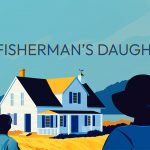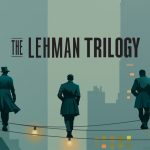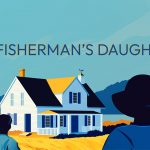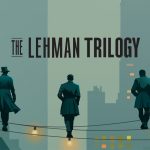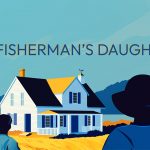2005-10 Vital Source Mag – October 2005
Death Cab For Cutie
By Eric Lewin Death Cab for Cutie‘s Transatlanticism was the indie gorilla that kept hope alive for pop music; it seemed back on the upswing. A band with R.E.M.’s unique combination of indie smarts and pop sensibility had finally come home to roost. Even more hopeful is the notion that DCFC could match or, dare we dream, trump themselves with Plans. Is it possible? Well, not yet. Plans picks and chooses elements from DCFC’s back catalogue, and the results are hit and miss. Still remaining is Ben Gibbard’s melodic genius, which has very few contemporary rivals. “I Will Follow You into the Dark,” a beautiful acoustic number, might be the Prozac generation’s first wedding song. “Your Heart is An Empty Room” revisits some of Death Cab’s better baroque offerings and even steals a piano fill from Transatlanticism’s “Lightness.” Did they think no one would notice? Noted success aside, DCFC’s straying from their signature nuances is like watching a fastball pitcher try a split-finger knuckler – some of their liberties end up on the wrong side of the fence. The virtuosic homage to Rush at the end of “Different Names for the Same Thing” is an irrelevant coda to a bland song. Also gone is a good deal of DCFC’s pessimism: “Someday You Will Be Loved” is an enthusiastic goodbye to bad memories, for better or worse. After all, it’s hard to be sad when you’re getting shout-outs from Seth Cohen. Smile, My Space kids. Your favorite band will smile with you. DEATH CAB FOR CUTIEPlansAtlanticwww.deathcabforcutie.com Death Cab for Cutie‘s Transatlanticism was the indie gorilla that kept hope alive for pop music; it seemed back on the upswing. A band with R.E.M.’s unique combination of indie smarts and pop sensibility had finally come home to roost. Even more hopeful is the notion that DCFC could match or, dare we dream, trump themselves with Plans. Is it possible? Well, not yet. Plans picks and chooses elements from DCFC’s back catalogue, and the results are hit and miss. Still remaining is Ben Gibbard’s melodic genius, which has very few contemporary rivals. “I Will Follow You into the Dark,” a beautiful acoustic number, might be the Prozac generation’s first wedding song. “Your Heart is An Empty Room” revisits some of Death Cab’s better baroque offerings and even steals a piano fill from Transatlanticism’s “Lightness.” Did they think no one would notice? Noted success aside, DCFC’s straying from their signature nuances is like watching a fastball pitcher try a split-finger knuckler – some of their liberties end up on the wrong side of the fence. The virtuosic homage to Rush at the end of “Different Names for the Same Thing” is an irrelevant coda to a bland song. Also gone is a good deal of DCFC’s pessimism: “Someday You Will Be Loved” is an enthusiastic goodbye to bad memories, for better or worse. After all, it’s hard to be sad when you’re getting shout-outs from Seth Cohen. Smile, My Space kids. Your favorite band will […]
Oct 1st, 2005 by Vital ArchivesKanye West
By Kevin Krekling On his new album Late Registration, Kanye West proclaims “I think I died in that accident, ‘cause this must be heaven.” Boy, is he right. Ever since the release of his monster debut The College Dropout, Kanye has been everywhere. He went from the Grammy’s to Hurricane Katrina benefits and, most importantly, the top of the hip-hop world. His beats are going for about $75,000 a song and a 16-bar verse might cost you more. Is he worth it? If Late Registration is any proof, the answer is a resounding yes. Knowing that it would be impossible (and boring) to make a College Dropout Vol. 2, Kanye ditches the “old soul sped-up sample” style he perfected and moves on. In an attempt to tackle some new sounds and genres, West enlists Grammy-award winning (and completely non hip-hop) Jon Brion to serve as co-producer for the album. A risky move indeed, but the gamble pays off. The result is the best hip-hop album of the year (although 2005 was a very weak year for hip-hop) and also the most imaginative. From the syrup-sippin’ Dirty South anthem “Drive Slow,” to the baby mama-drama of “Gold Digger,” to the overdramatic, James Bond-sampling “Diamonds Are Forever,” the album is chocked full of excitement. Initially, some cuts don’t seem like they should work (who puts Maroon 5’s Adam Levine on a hip-hop song, anyways?), but they do. The one knock on West is his mic skills. Although his flow is thought provoking, funny (“she said she want diamonds, I took her to Ruby Tuesdays”), and creative, West doesn’t have the natural voice of a Biggie Smalls or Method Man, and sometimes the music suffers. On the album’s best song, “Gone,” his vocal shortcomings are magnified when he is simply overpowered by the verses of superior MC’s such as Cam’ron and Consequence. But those moments are few and far between, so it is not worth shutting the album off. Late Registration is not The College Dropout. In many ways, it’s better. VS
Oct 1st, 2005 by Vital ArchivesRedemption Song
Here’s the thing about Liz Phair. If you’re a great admirer (as I am) you might be intimidated by the prospect of speaking to her directly (as I was). Even as a seasoned feature writer with two decades of bylines in my files, I was so nervous that when her publicist patched us together that I kind of froze. “Hello?” she said, her speaking voice a little higher and more melodic than I’d imagined. “Are you there?” Tongue-tied, I almost hung up, but I was on assignment, so instead I did the only thing I could under the circumstances. I confessed my insecurity, potentially sealing my fate as a pathetic amateur in her eyes. “God, don’t you hate that? That happened to me not too long ago.” She giggles, but it’s a conspiratorial girl-giggle, meant to put me at ease. She then tells the story of being in Michael Penn’s home recording studio, working on tracks for Somebody’s Miracle, when Joni Mitchell popped in. Penn invited Liz into the kitchen to meet her all-time musical hero, but, she confesses, “I was so freaked out, my ass was frozen to the couch. Absolutely frozen. I could not get up. When I finally did, I kind of hung back by the doorjamb. I had nothing interesting to say to her.” She goes on to tell about meeting Mick Jagger (again) recently, and how she tried to lighten things up by being friendly and cracking a joke. But everything she said seemed to come off as offensive in some way, so she just shut her mouth. We agreed that it was probably the difference between being Midwestern and being from, well, about anywhere else. I pushed aside unbidden thoughts of the great girlfriends Liz and I would surely have been in a different life and pressed on. Here’s something you may not know. Liz Phair is at peace with herself. This is a relatively new development, a spiritual transition years in the making. Nothing shakes up one’s world quite like parenthood, except perhaps a painful divorce or a career inexplicably on the slide. For some, the death of a much-loved relative can turn everything upside down. And when it all comes down more or less in a continuum, there’s no time to process each piece individually. It’s a true “get real” moment, fall or rise. Liz has risen, and her first big step was self-forgiveness. “There is an acceptance in me now,” she says. “I feel like I turned a corner in my personal life where I stopped running from all my bad qualities and said ‘enough is enough.’ I don’t want to live the rest of my life alone; I don’t want somebody making excuses for me, I don’t want to be somebody that my son needs therapy to get over.” But inner equilibrium is learned behavior for the woman who had the (mis)fortune of releasing one of the most acclaimed debut records of all time, then proceeded to ride celebrity like […]
Oct 1st, 2005 by Jon Anne WillowTop Fives
By Jon M. “Big ‘Uns” Gilbertson, Vital Source and BeyondFive Albums That Make Me Glad To Have Testicles 1. AC/DC, Highway to Hell2. Afghan Whigs, Black Love3. Public Enemy, It Takes a Nation of Millions to Hold Us Back4. The Stooges, Fun House5. Velvet Underground, White Light/White Heat Kevin Groen, Vital Source Top Five Albums That Make People Ask, “Who’s this?!” (Not in a condescending way, but in an, “I want to get this” way)1. Blanket Music: Cultural Norms2. Mates of State: Team Boo3. Ted Leo and the Pharmacists: Shake the Sheets4. Plush: Underfed5. Fiery Furnaces: Blueberry Boat Haven Langhout, WMSE, Moct Bar, Vital Source (and more!)Top Five Favorite Summer of 2005 Albums.1. Hot Chip: Coming on Strong2. Patrick Wolf: Lycanthropy3. Weird War: Illuminated by the Light4. Magic Arrows: Sweet Heavenly Angel of Death5. Colder: Heat Eric Lewin, Vital Source Top Five Records To Be Stranded On A Deserted Island With1. The Clash: London Calling2. The Beatles: The White Album3. Grateful Dead: American Beauty4. Stone Roses: S/T5. Nirvana: Unplugged in New York Jason Mohr, Juniper Tar, WMSETop Five Records To Fall Asleep To1. Vashti Bunyan: Just Another Diamond Day2. Brian Eno/Daniel Lanois: Apollo3. Miles Davis: In a Silent Way4. Early Day Miners: Let Us Garlands Bring5. Neil Young: Dead Man – Motion Picture Soundtrack Liz Phair, HerselfTop Five Current Faves1. Stevie Wonder: Songs in the Key of Life2. Dave Matthews: Stand Up3. Rilo Kiley: More Adventurous 4. Missy Higgins: The Sound of White5. Jack Johnson: In Between Dreams The Rhythm Chicken Most Spun CDs in the Last Two Months in His Post-Communist Apartment Block Home in Krakow, Poland1. Call Me Lightning: The Trouble We’re In2. Replacements: All For Nothing, Nothing For All3. Bright Eyes: I’m Wide Awake, It’s Morning4. Chariot’s Race: Existence5. The Clash: Give’m Enough Rope Evan Solochek, Vital SourceTop Five Road Trip Records1. Weezer: Blue Album2. Ben Folds Five: S/T3. The Shins: Chutes Too Narrow4. The Decemberists: Her Majesty, The Decemberists5. The Anniversary: Designing A Nervous Breakdown Lucky Tomaszek, Slightly Crunchy Parent, Homebirth MidwifeTop Five Albums for Childbirth, in no particular order1. Various Artists : Oh Brother, Where Art Thou? Soundtrack 2. Indigo Girls: Swamp Ophelia3. Kate Bush: Hounds of Love 4. Enya: Watermark 5. Sarah McLachlan: Fumbling Towards Ecstasy Matt Wild, Holy Mary Motor Club, Vital SourceAll-Time Top Five Records1. Dead Milkmen: Big Lizard in My Backyard2. They Might Be Giants: Lincoln3. Pixies: Trompe le Monde4. The Beatles: Help!5. Def Leppard: Hysteria Jon Anne Willow, Vital Source, Bremen CaféTop Five Records To Hear While Writing1. Beatles: Let It Be2. Bonnie “Prince” Billy: Ease Down the Road3. Liz Phair: whitechocolatespaceegg4. Brad: Shame5. Tangle Eye: Alan Lomax’s Southern Journey Remixed Erin Wolf, Chariot’s Race, Vital Source Top Five Discs to Pound the Pavement With Running Sneaks1. Luna: Lunapark2. Fugazi: The Argument3. Rogue Wave: Out of the Shadow4. The Pixies: Trompe le Monde5. Idlewild: 100 Broken Windows VS
Oct 1st, 2005 by Jon Anne WillowMilwaukee Sound Environment Project
By Haven Langhout Milwaukee is an excellent place for local music of all stripes and it wouldn’t be too far a stretch to say that 91.7 FM WMSE has had a lot to do with it. Since its unlikely birth as the broadcast service of the Milwaukee School of Engineering in 1981, WMSE has been regularly playing locally made and played music, interviewing bands and aiding in producing local musicians’ albums. Ask pretty much anyone involved in the Milwaukee music scene and they’ll attest to what a great resource WMSE has been. “WMSE has given us on-air exposure, show opportunities and support. To have a local independent station that acknowledges and reaches out to smaller experimental bands is amazing,” says Faythe Levine of Wooden Robot. “[It’s] Music by the Milwaukee people, for the Milwaukee people.” Until recently, the station’s efforts have been ongoing but ad hoc. This changed earlier this year with the launch of the Milwaukee Sound Environment Project, or The MSE Project for short. WMSE’s mission is to broadcast a wide variety of unique music unheard anywhere else on the local dial, and to provide a venue for artists to expose their work to the community. The MSE Project shares this goal and then some. On a recent Tuesday evening, I met up with WMSE Promotions Director Brent Gohde for a full explanation. Brent quietly greeted me at the station’s front door around 7 p.m. and we walked through the lobby, where the band Clamnation was setting up to play live on the air at 8. Sound engineer Billy Cicerelli checked the musicians’ levels. Behind them in the glass-walled booth, DJ Radio Dave was broadcasting his weekly program, Midnight Radio. We found a quiet spot in Studio C and Brent gave me the scoop. The MSE Project began as the brainchild of Polly Morris of UWM’s Peck School of the Arts and the WMSE Steering Committee. Morris saw an opportunity for a matching grant from the Milwaukee Arts Board to aid WMSE in their support of local musicians. Gohde, along with station director Tom Crawford and Cicerelli, fleshed out the idea for The MSE Project and applied. The Board awarded WMSE the grant for the full amount requested, renewing it again for another two years in June. The Milwaukee Arts Board allows a maximum of three years of funding, but WMSE is planning for the project to be self-sustaining by the time the grant is up. The Project has three components: the Local Live weekly radio program, the website www.mseproject.com, and the release every six months of a CD compilation of live recordings made at the station. Local Live happens every Tuesday night at 8 p.m. and is hosted by either Bob Midnight or Radio Dave of the Midnight Radio show. The featured local band plays several sets over the course of half an hour, their performance professionally recorded by Cicerelli. The DJs interview the band and promote upcoming shows, new releases or other band news. Perhaps most importantly – […]
Oct 1st, 2005 by Vital ArchivesOctober 2005
Dear Readers, In the wake of the mind-bending chain of events in the four years since 9/11, most people who are honest with themselves will acknowledge that their political and social beliefs influence their outward behavior more than in the past. I was not around for McCarthyism; I was a child during Viet Nam, but I imagine the elevated tension between co-workers and neighbors with differing viewpoints is similar to the mood that divided Americans in those other times. Never in my lifetime have I heard people so commonly characterized by their political affiliation. “Joe in accounting? He’s okay, but he’s a conservative.” “Lisa down the street? She’s an MPS teacher, so you know she voted for Kerry.” I did not believe in God on September 10, 2001. I had never felt a Presence, and therefore didn’t believe “the faithful” had, either. I was angry at organized religion for the dogmatic subjugation of congregations by both fear of hell and the promise of moral superiority (okay, I’m still pretty pissed about that). But on September 11, when the planes rained fiery death on thousands of innocent humans, I felt, through my whole body, a great tearing, a sucking loss of life force instantly filled by a rushing wave of intense sorrow stronger than I could ever have imagined. In the days that followed, I could see my own reflection in the faces of everyone I met. We all wanted to help, to fix the horrible thing that had happened. We all wanted to cry, and we did – in our cars, at our desks and in our living rooms. Living through this, I came to understand the nature of God. God is not 19 extremists flying hijacked instruments of death into people-filled buildings. Nor is God a raging hurricane plunging hundreds of thousands of our most vulnerable citizens into a living nightmare. God is what happens in the wake of such tragedy. God is when we all really, really feel the pain together. When we extend a hand to help, giving of ourselves without considering the social or political views of those we’re helping. God is Love. We are God. And whether you affix the existence of God to a “collective We” or not, you may be starting to notice a change in the air these last few weeks. I think we’re sick of fighting with each other; (almost) ready to move past our relentless divisiveness, for now anyway. As a citizenry, we’ve got problems we can only fix if we work together. We need real jobs, we need quality schools and we need a safety net for the vulnerable. These are the greatest threats facing America now, and as more citizens are personally confronted with basic needs not met – and not prioritized – by our leadership on both sides of the aisle, I believe we will turn back to each other for answers, for hope. In doing so, we can push our will upwards and into the American […]
Oct 1st, 2005 by Jon Anne WillowThe Silent Players
By Evan Solochek With roots in rock & rolls infancy, poster art has long been one of the most defining avenues through which underground music scenes have endured. While in most cases the artists who create it never pick up a guitar or sing a note, they serve just as integral a role as the musicians themselves. We hooked up with three of Milwaukee’s foremost poster artists to find out what moves them. Vital Source: How did you get started making posters for bands? Damian Strigens: Whatever band I was in I just decided to do it. I was the default guy. Mainly it’s just having fun. It’s rock ‘n roll. It’s music. James Kloiber: Back in ‘98 I was going to shows at Globe East like every weekend and I was also going to art school and I wanted to do something to get my art out there. Poster art seemed like a very natural thing. It was something to help out the music scene and keep myself drawing. Eric Von Munz: I was involved in the underground music scene, I was going to shows like every weekend, and thought I could contribute something back to the scene on a visual level because I’m not a musician. VS: What was the first band you made a poster for? DS: The Sacred Order – 1984 JK: Avail w/Straightforward and Codebreaker – May 23, 1998 at the Globe East EM: Gus Hosseini’s Birthday Bash – 1993 VS: What inspires your poster art? DS: Vaughan Oliver really inspired me. He used a lot of inverted images and metallic inks. There is this one story of when the Breeders asked him to do a poster for them and he came back with something totally different from what they asked for and they were like “this is totally different than what we asked for. It’s perfect.” JK: When I got started, Frank Kozik and Coop and Derek Hess. EM: I only do posters for bands I like. So if I like the band, then the band is going to inspire me to do the art. I can’t just pull stuff out of the ether. VS: To what extent do the particulars of the band influence your poster? JK: Sometimes they don’t at all. A lot of times I’ll get the assignment having never heard them, which may or may not be a good way to work. Sometimes I’ll look at their website and see what sort of stuff the band likes for their art work, what the covers of their CDs look like, or look at their song titles for ideas. It’s usually just one little thing that I take to get an idea from. DS: It does and it doesn’t. Sometimes the most obvious thing, like a skull on a poster for a heavy metal show, leaves nothing to the imagination. I like something with a little more mystery to it, a little more abstraction. I like to push things away from the […]
Oct 1st, 2005 by Vital ArchivesLiz Phair
“I don’t have to say what I’m thinking, because the radio’s on and everyone’s heard my latest song.” From “Got My Own Thing” At the water cooler of a figurative Music Lovers World Headquarters, two Liz Phairs are discussed. The first Liz will never overcome the happy accident of having penned one of rock’s all-time greatest debut records. This Liz now makes stylistically confusing records that disappoint the “fans” who’ve known her since “when,” who are always on the brink of giving up on her but can’t quite. The other Liz stands straight, ready to spit in your eye or (worse) turn her back on you if you don’t like her shit, which has been about her and her own creative process – not you – all along. It is the second Liz who made Somebody’s Miracle. Miracle brilliantly connects the dots of Phair’s past work and frames all within the context of an artist who finally, fully understands her creative voice. Its 14 songs are an amalgam of frank self-understanding and third-person narrative, and Phair deftly mines the territory she first tapped in earnest in whitechocolatespacegg, creating characters so real their stories seem autobiographical. Her guitar is also back from its one-record hiatus, complete with Phair’s signature quirky picking style, still charmingly evocative of a passionate teen playing on the foot of her bed. Overall, it’s a simpler record than 2003’s self-titled release, though its polished production values send a clear message about the evolution of Phair’s musical direction: she’s moving forward. You can come if you want to. VS
Oct 1st, 2005 by Jon Anne Willow














